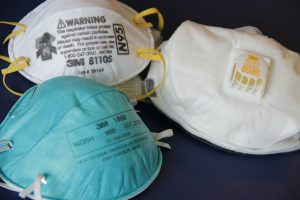Lack of evidence is usually the best defense in multi-witness cases. By the time police officers arrive on scene, the dispute has usually moved off premises or the defendant has left.
In February 2021, Minnesota legislators began considering HF 604, a bill which would codify Governor Tim Waltz’s Executive Order concerning protective face masks. This subject is controversial to say the least. Social media accounts are littered with videos which show virulent anti-maskers dragged from public facilities and equally determined pro-maskers condemning people for technical violations. Now, the Legislature is stepping into this arena. Keep reading to see how the proposed HF 604 stacks up against the existing Executive Order.
Overall, very few face mask violations make it to court. Frequently, officers give people who steadfastly refuse to comply a “time out” in the back of a squad car and immediately release them. But the process illustrates the way a Minneapolis criminal defense lawyer examines criminal laws and identifies defenses or weaknesses which are in the law itself.
The Current Executive Order
Governor Waltz’s order requires everyone to wear “a face covering in indoor businesses and indoor public settings.” These key words are very broadly defined. For example, a face covering is anything which completely covers one’s mouth and nose. The covering must actually go over these areas and not simply be capable of covering them. So, wearing a face mask below the nose violates this order. The requirement applies in:
- Any indoor public space or in a line of people waiting to enter said space,
- Ridesharing or public transportation vehicles, or
- Outdoor work areas if social distancing “cannot be maintained.”
The Order does not define “cannot be maintained” and gives no examples. Presumably, this provision applies to commercial construction sites and other small areas with lots of workers.

Medical conditions and children under 5 are the biggest exemptions. Under the Order, a medical condition by itself does not qualify as an exemption. Instead, the condition must make it “unreasonable for the individual to maintain a face covering.” Children five and under are exempt, and children 2 and under “should never wear a face covering due to the risk of suffocation.” Generally, people may temporarily remove masks when eating, drinking, playing sports, exercising, playing certain instruments, and participating in other activities, if social distancing restrictions are in effect.
Individual violators may be charged with a gross misdemeanor (90 days in jail and/or $1,000) fine. Offending businesses could face a $25,000 civil penalty.
Proposed Legislation
The Executive Order has twenty sections. The proposed law has three sections (four if you count the expiration section). Vague, general laws like this one usually have a number of loopholes and weaknesses.
The law defines a face covering as “an article that is worn on an individual’s face to completely cover the wearer’s mouth and nose and that fits snugly against the sides of the wearer’s face.” That definition appears to exclude some common protective devices, such as face shields and bandanna-style masks. Rather confusingly, scarfs, bandannas, and religious face coverings, presumably veils, are among the acceptable use examples.
Wearing requirements are much the same. The biggest change is people waiting in line outside to enter an indoor business. HF 604’s requirement only applies to people “who are not members of the individual’s household.” In other words, people who live together need not wear face masks as they wait in line, as long as they are socially distanced from other line-waiters.
Enforcement provisions are different as well. HF 604 is unenforceable against students under 14 who are at school or anyone under 13 at any time. Additionally, the penalties are lower. Individuals are subject to a maximum $100 fine and businesses could be charged with a gross misdemeanor.
Multi-Witness Cases
Currently, many people and businesses contest face mask violations in court, due to the high possible penalties. If HF 604 passes, most people and businesses will probably just pay the fine and move on.
Lack of evidence is usually the best defense in multi-witness cases. By the time police officers arrive on scene, the dispute has usually moved off premises or the defendant has left. So, prosecutors must use a civilian witness to establish the elements of the offense.
This requirement is difficult to fulfill. Domestic assault cases are a good example. Generally, the complaining witness must testify about the assault. Otherwise, the state has no evidence. Many complaining witnesses are biased or otherwise unqualified to testify. Others are unavailable by the time the trial rolls around, and the state has not preserved their testimony in a previous deposition. In these situations, a judge could dismiss the case due to a lack of evidence.


Join the conversation!